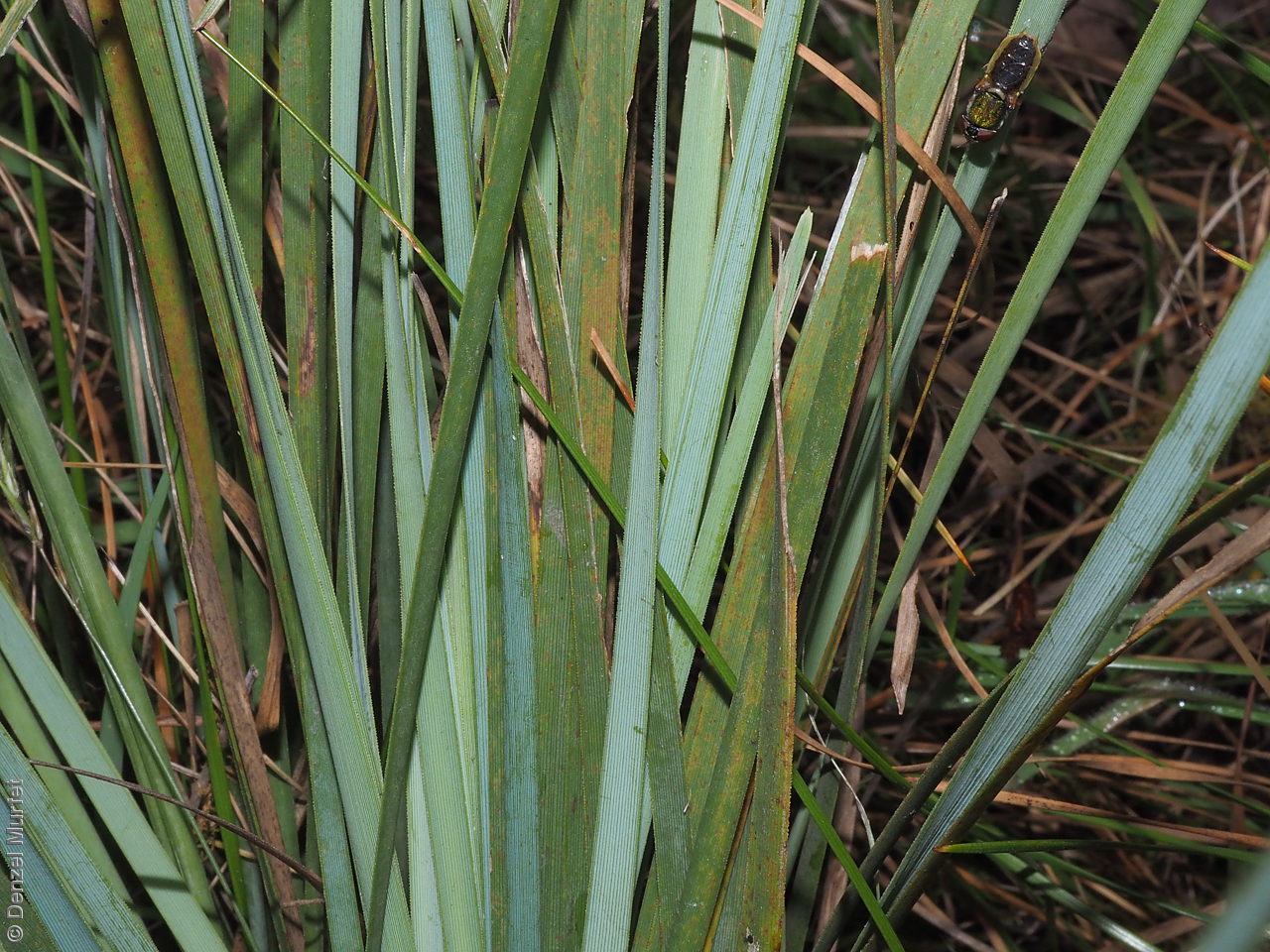
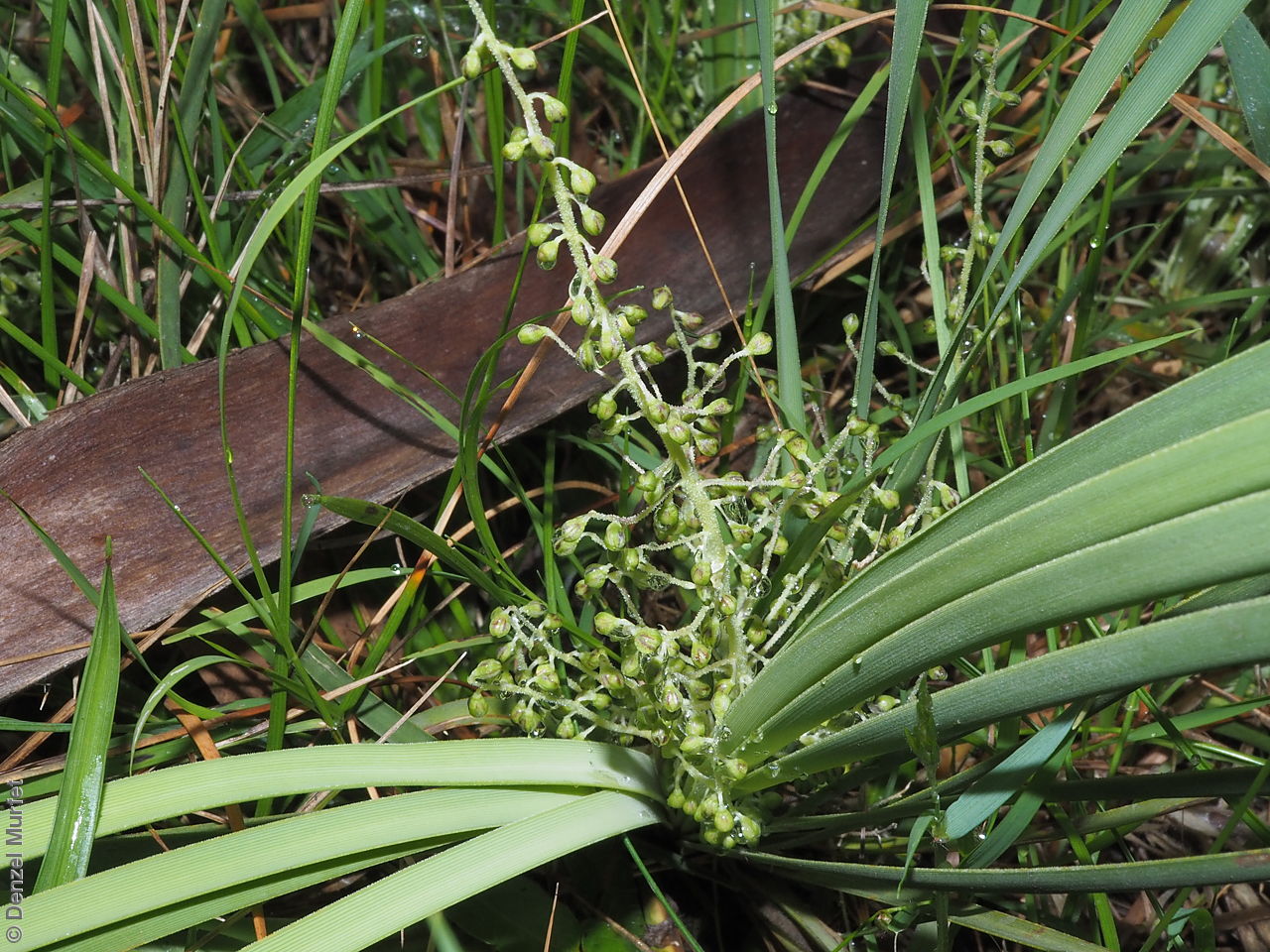
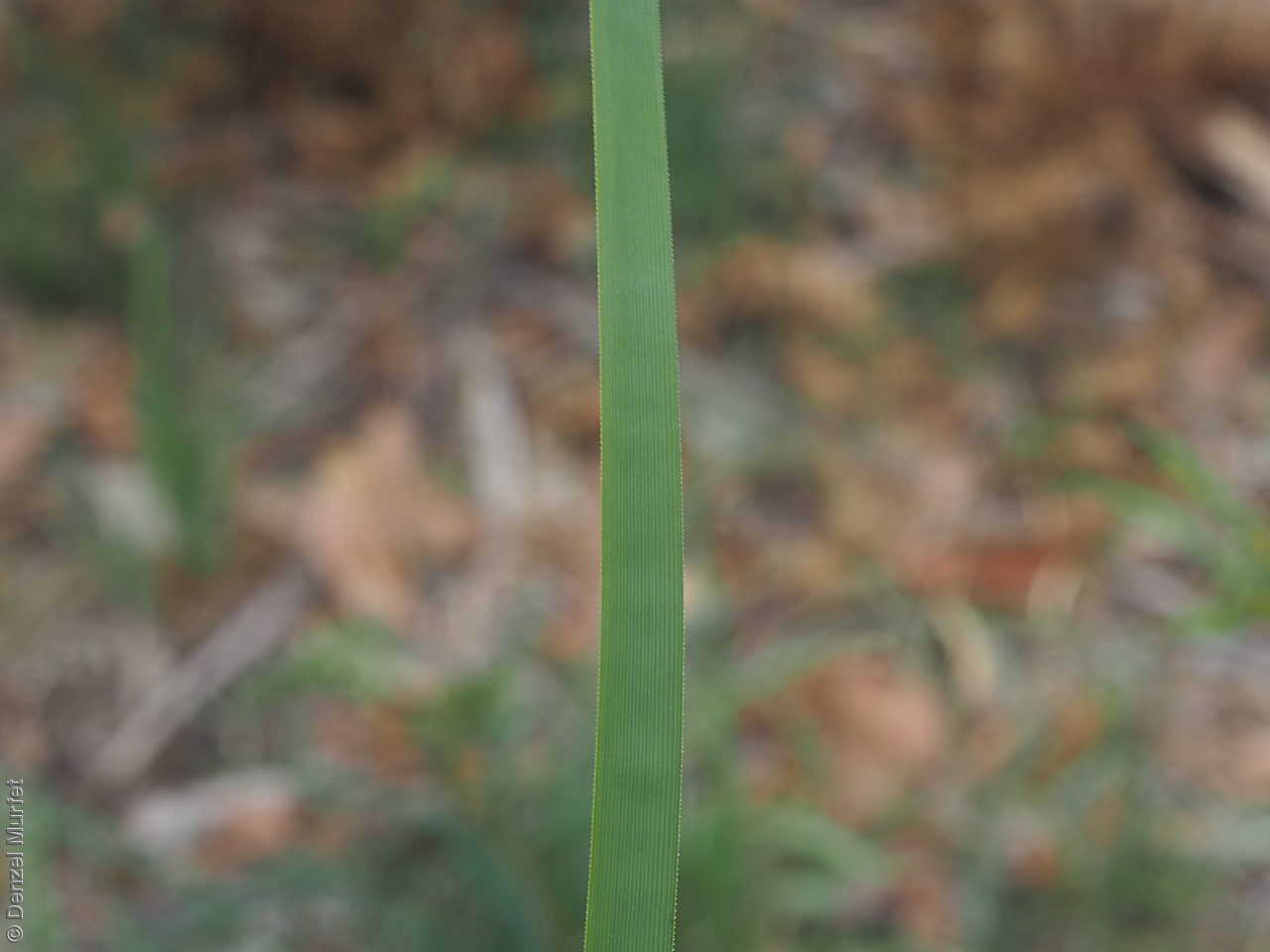
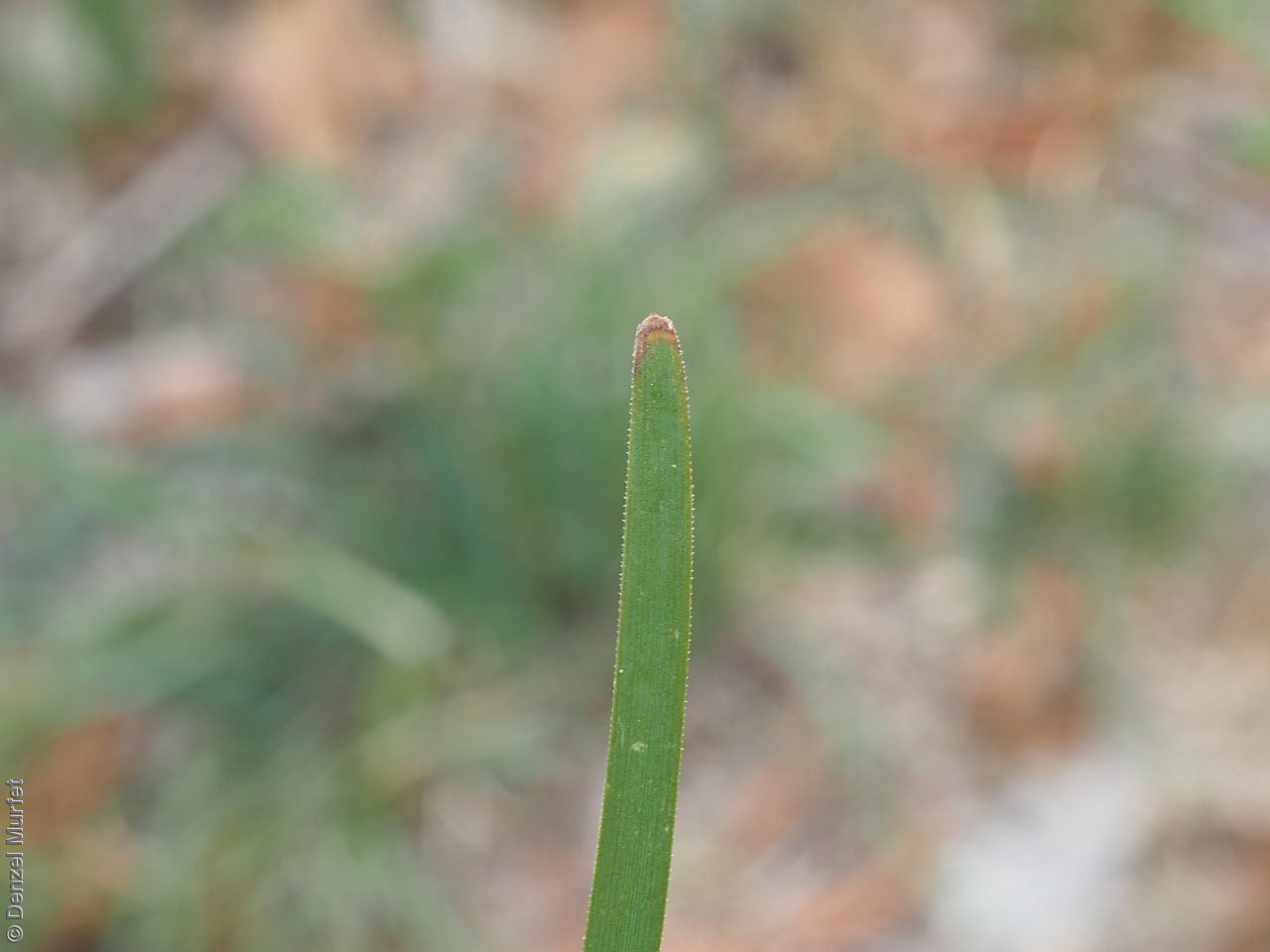
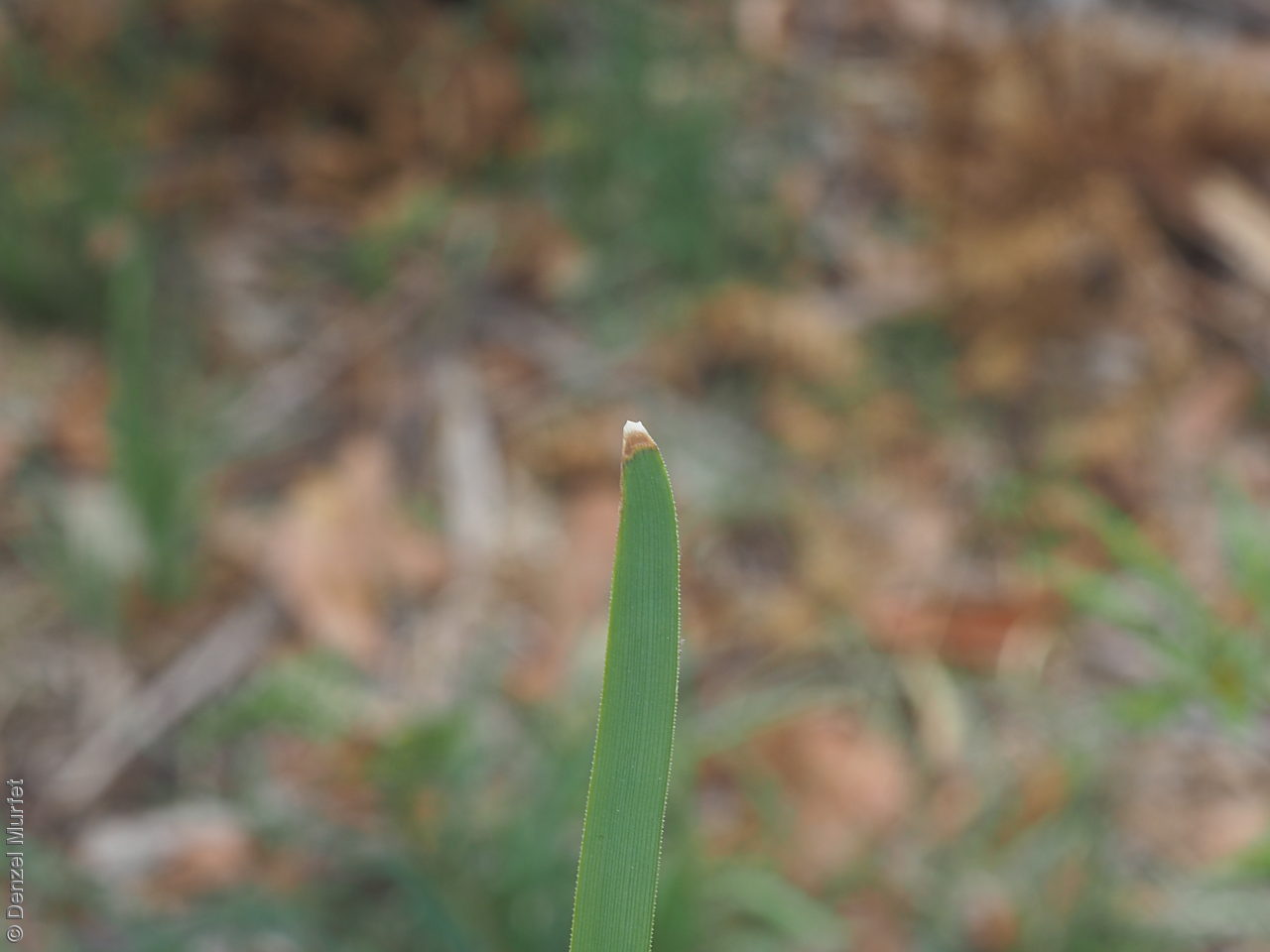
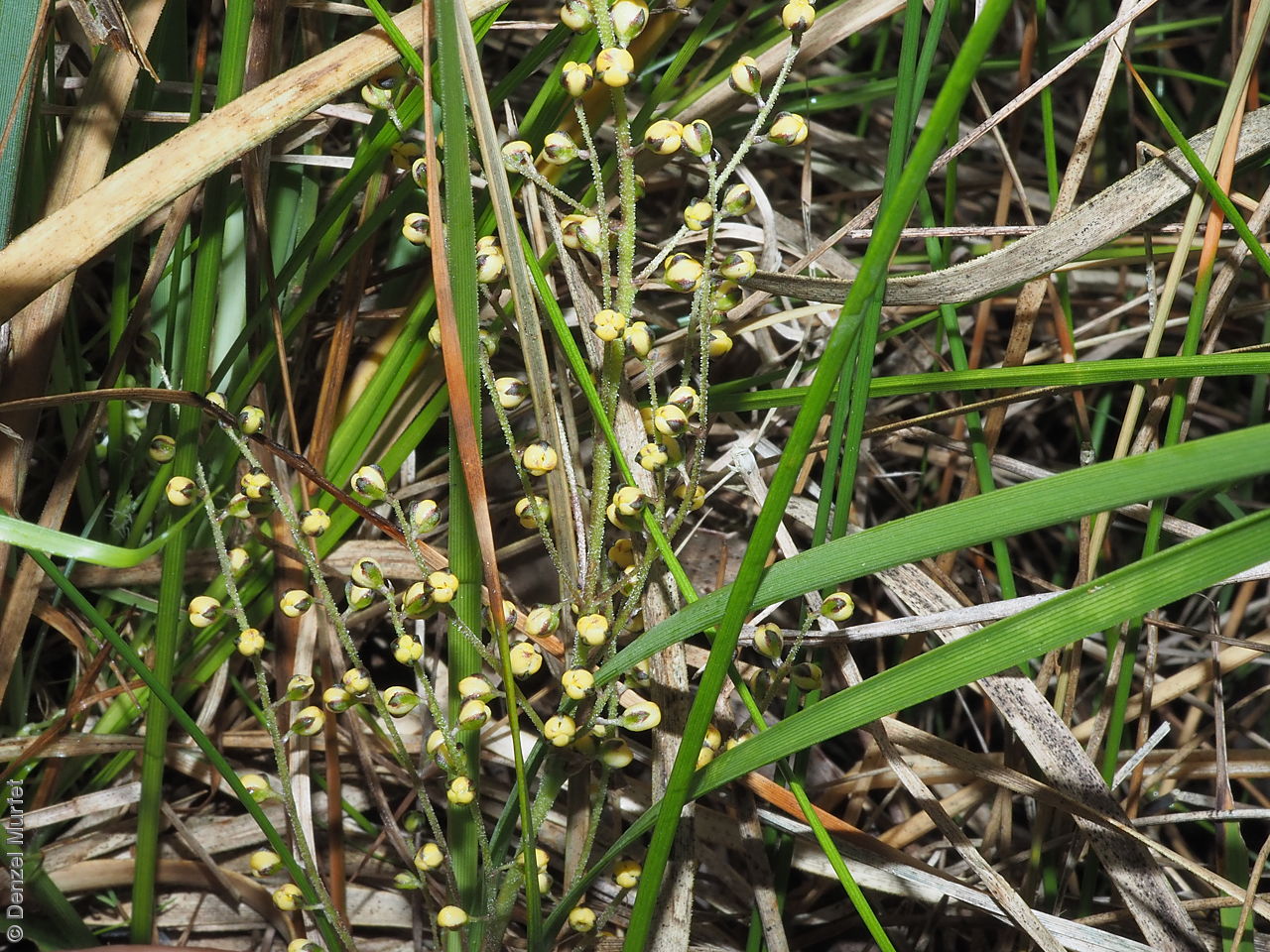
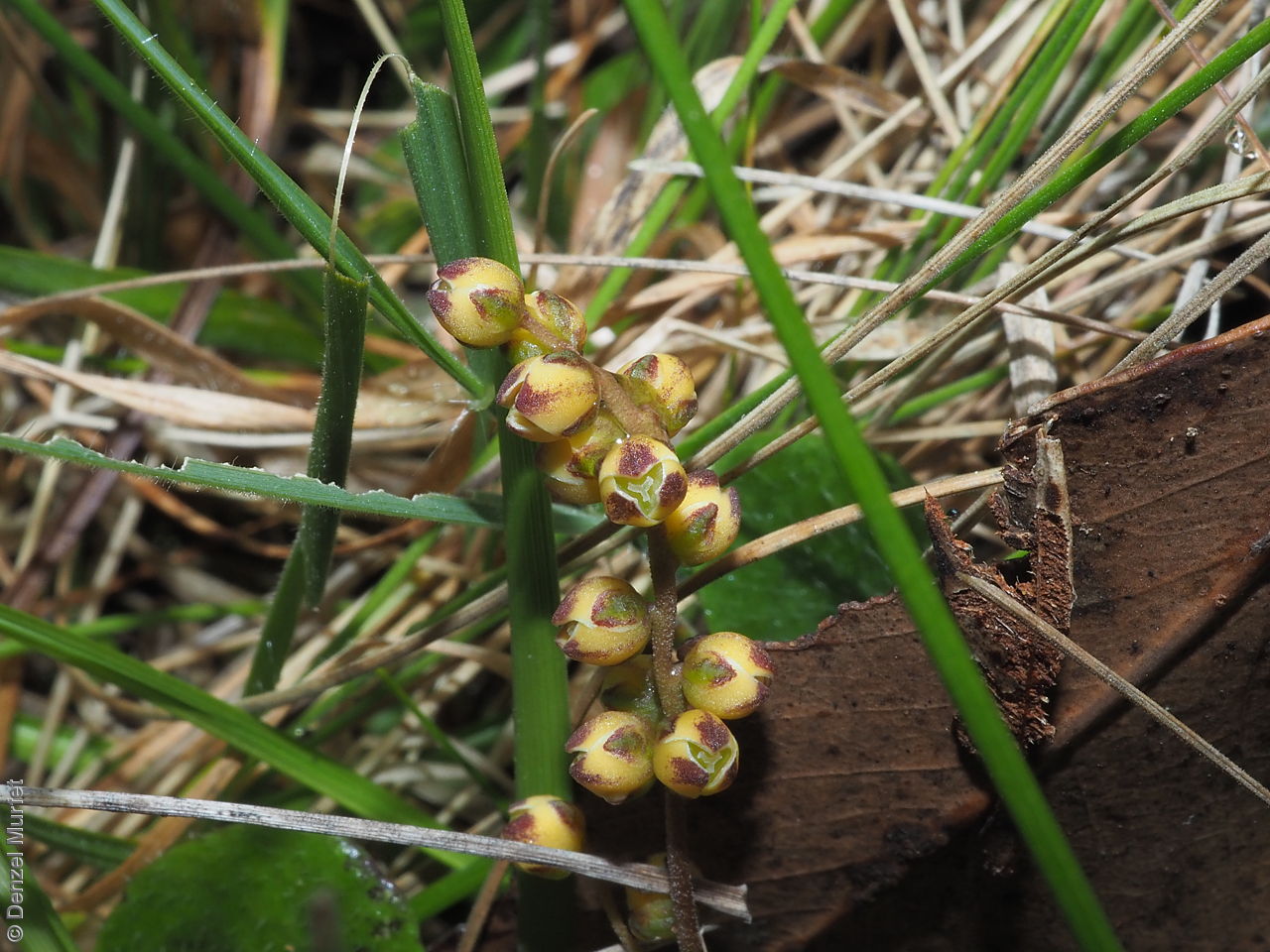
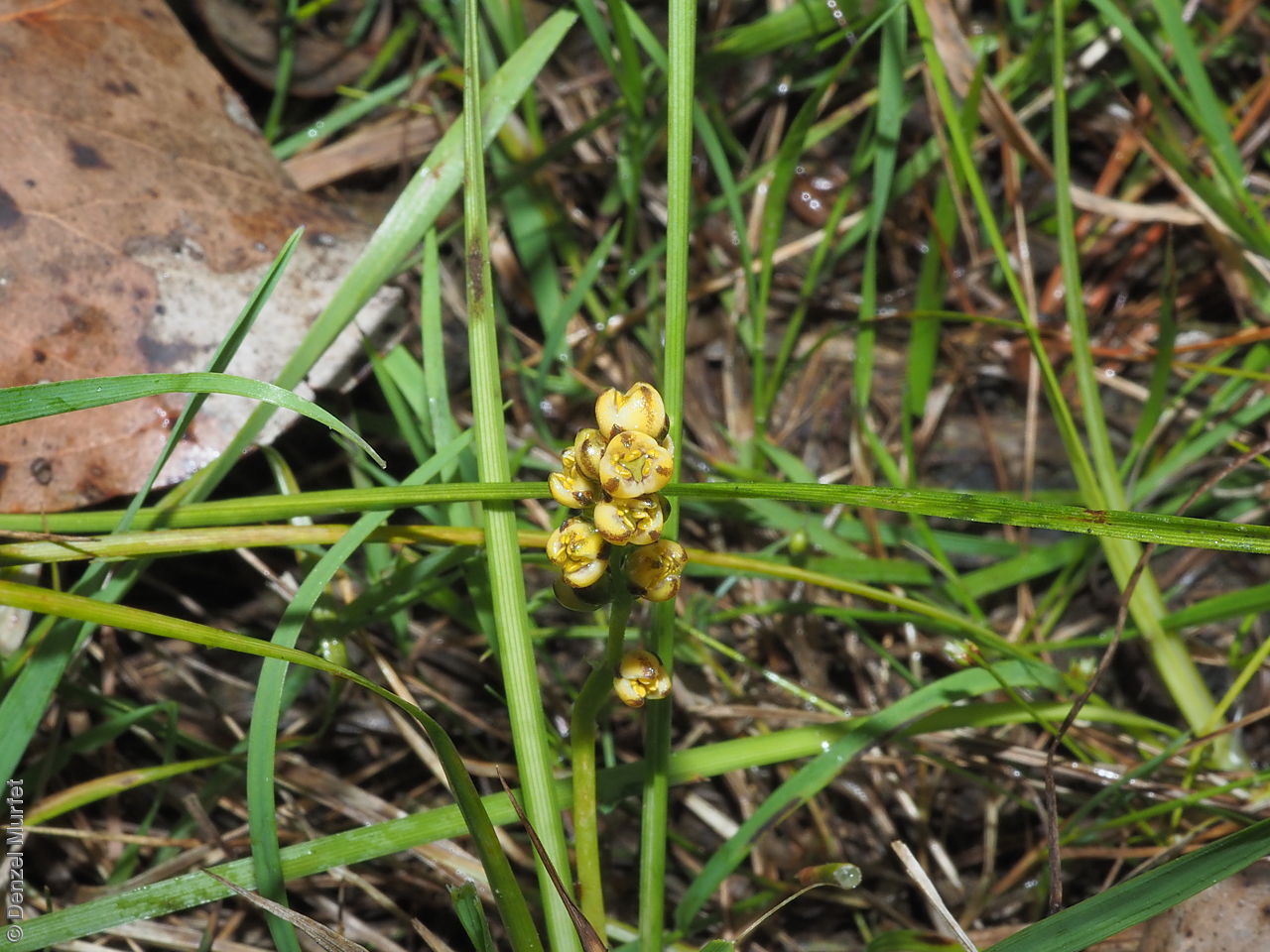
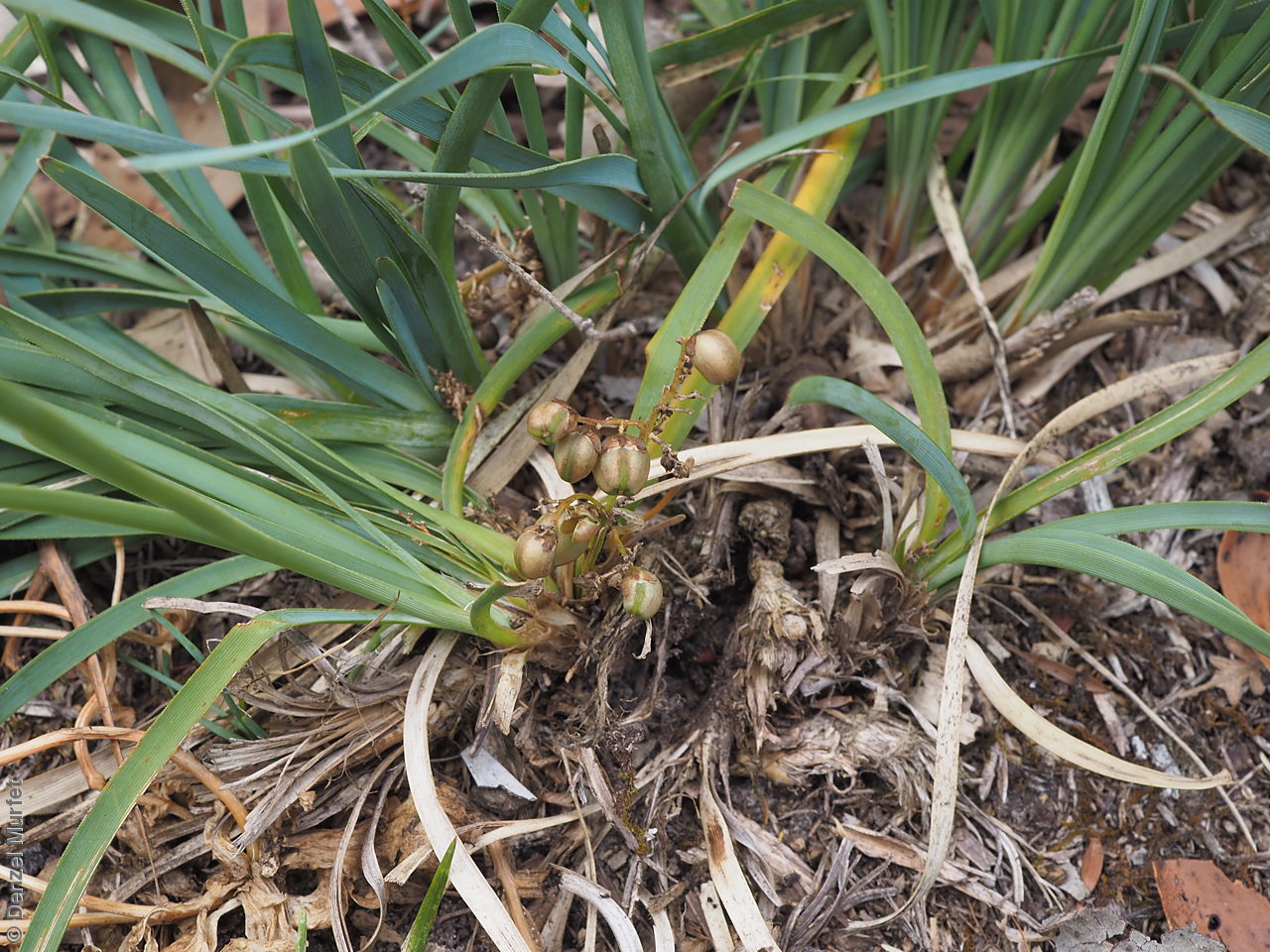
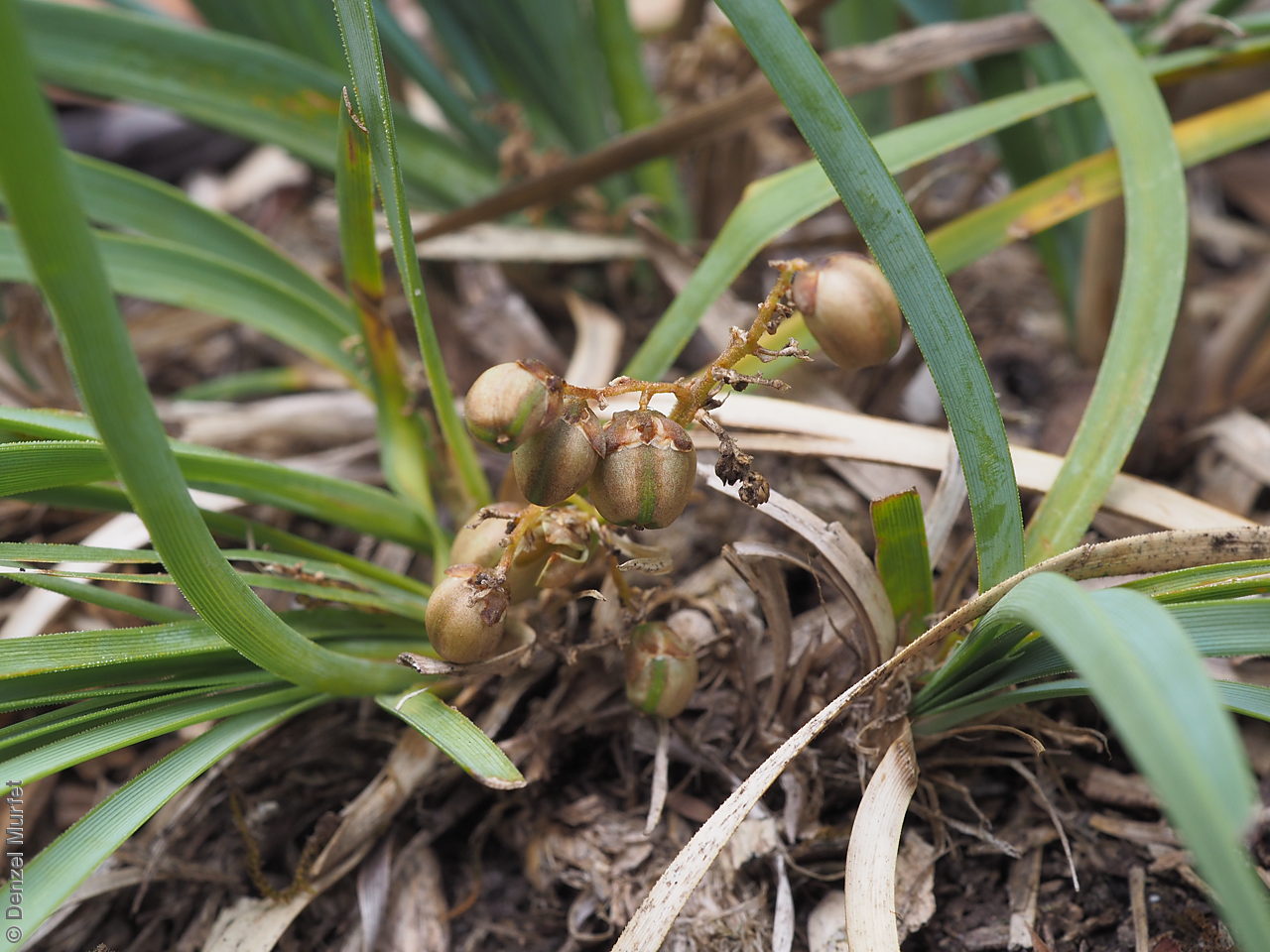
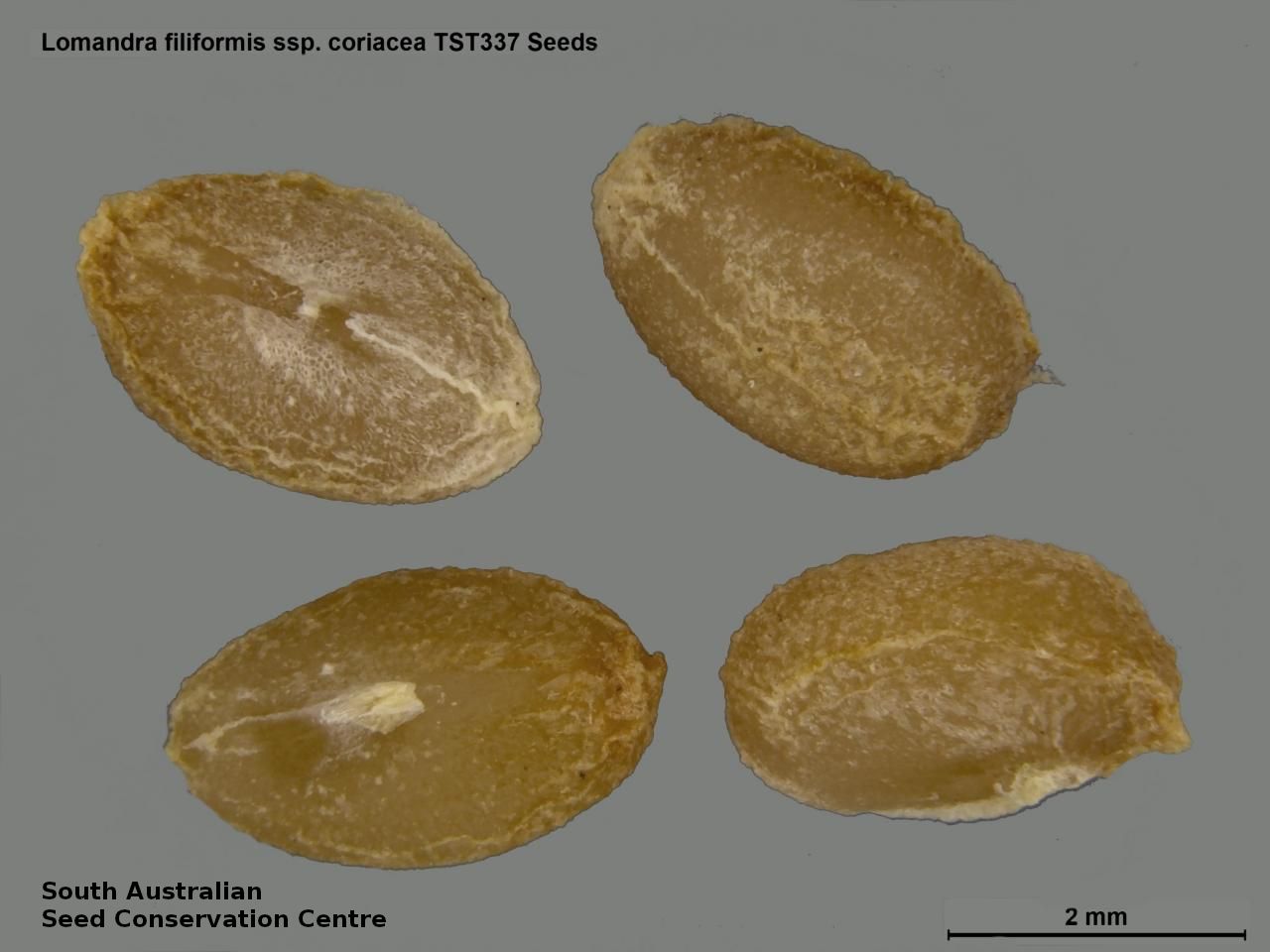
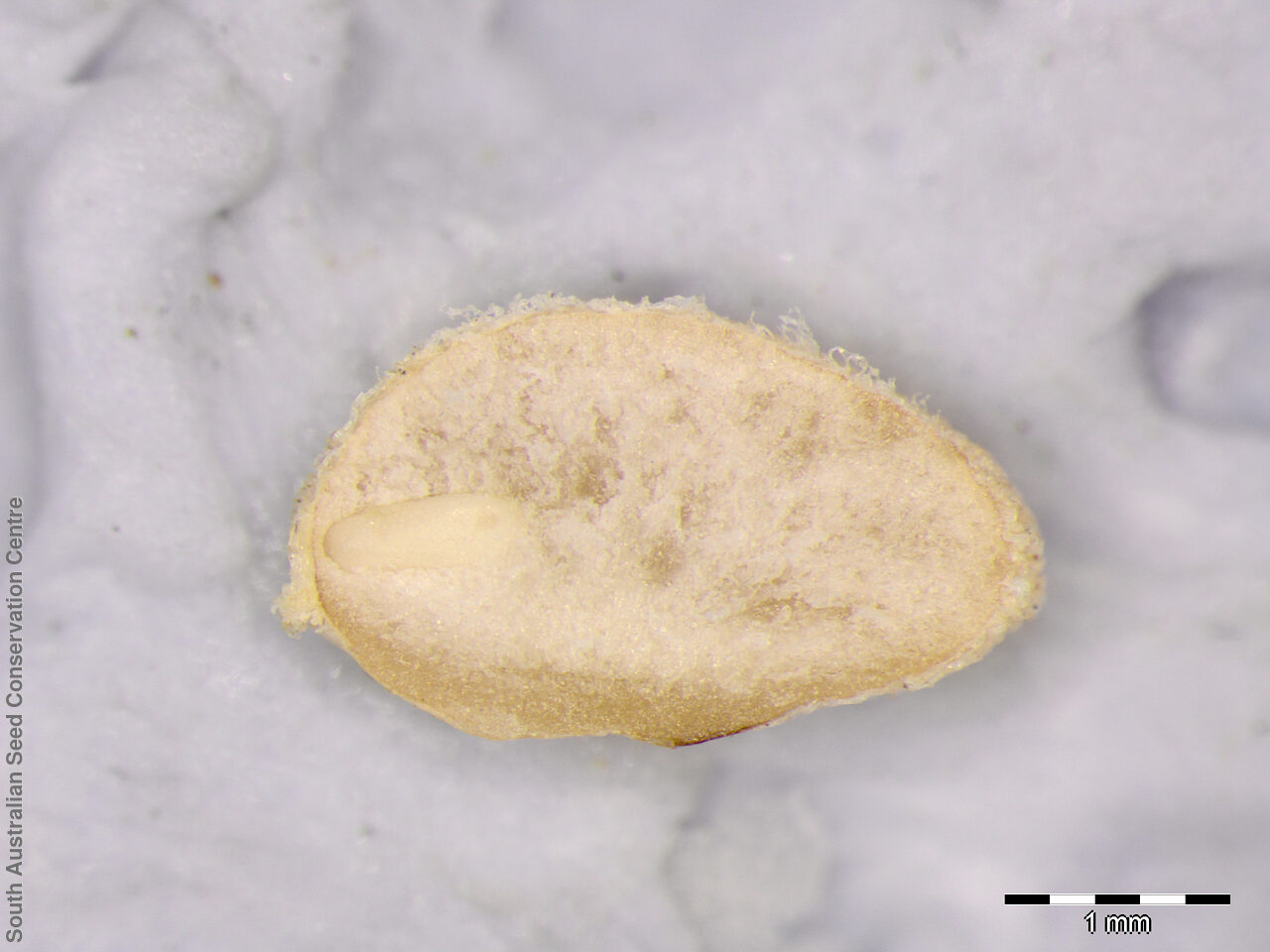
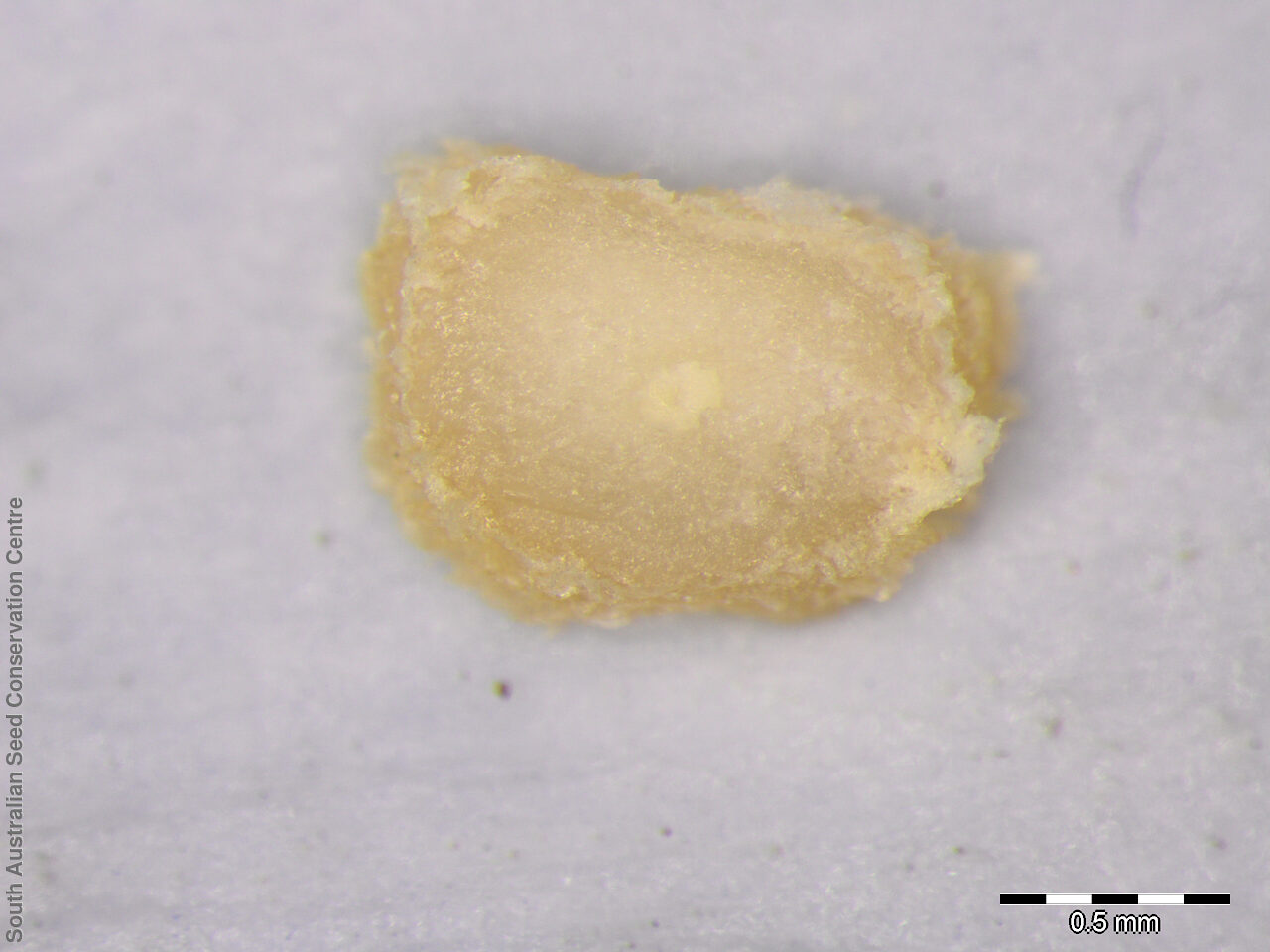


Botanical art
Etymology
Lomandra, from the Greek 'loma', meaning edge, border or fringe and 'andros,' meaning a male, alluding to the circular margin of the anthers in some species. Filiformis, from Latin meaning thread form, alluding to the shape of the leaf. Coriacea, from the Latin 'corium', meaning leather, alluding to the texture of the leaf.
Distribution and status
Found only in the lower South-east in South Australia, growing on shallow gravelly-clay or sandy soils of rocky or stony areas; often in dry open-forests and woodlands. Also found in Queensland, New South Wales and Victoria. Native. Rare in South Australia. Common in the other States.
Herbarium region: South Eastern
NRM region: South East
AVH map: SA distribution map (external link)
Plant description
Perennial tussock; sparse or occasionally in short, dense mats to 20 cm diameter. Leaves to 35 cm long and 4 mm wide; flat or nearly so, leathery or firm, smooth or scabrid, the apex usually entire (points readily eroded). Male inflorescence often up to a half as long as leaves, with a few branches; branches often whorled; axes scabrid, often yellowish. Female inflorescence smaller with axes often less scabrid. Flowering between September and March. Fruits are ovoid to globular capsule. Seeds are yellow-orange, rounded wedge-shaped seed to 4 mm long and 2 mm wide. Seed embryo type is linear, underdeveloped.
Seed collection and propagation
Collect seeds between December and May. Collect mature fruits, turning brown with a hard seed inside, or when they are starting to split. Place the capsules in a tray and leave to dry for one to two weeks,then rub the capsules gently by hand to dislodge the seeds. Use a sieve to separate the unwanted material. Store the seeds with a desiccant such as dried silica beads or dry rice, in an air tight container in a cool and dry place. From one collection, the seed viability was high, at 100%. This species has morpho-physiological dormancy and can take several weeks to germinate.
| Location | No. of seeds (weight grams) | Number of plants | Date collected | Collection number Collection location | Date stored | % Viability | Storage temperature |
|---|---|---|---|---|---|---|---|
| MSB | 1,450 (6.1 g) | 100+ | 10-Jan-2007 | DJD711 South Eastern | |||
| BGA | 7,000 (36.09 g) | 50+ | 16-Jan-2007 | TST337 South Eastern | 20-Jul-2009 | 100% | +5°C, -18°C |
Number of plants: This is the number of plants from which the seeds were collected.
Collection location: The Herbarium of South Australia's region name.
% Viability: Percentage of filled healthy seeds determined by a cut test or x-ray.